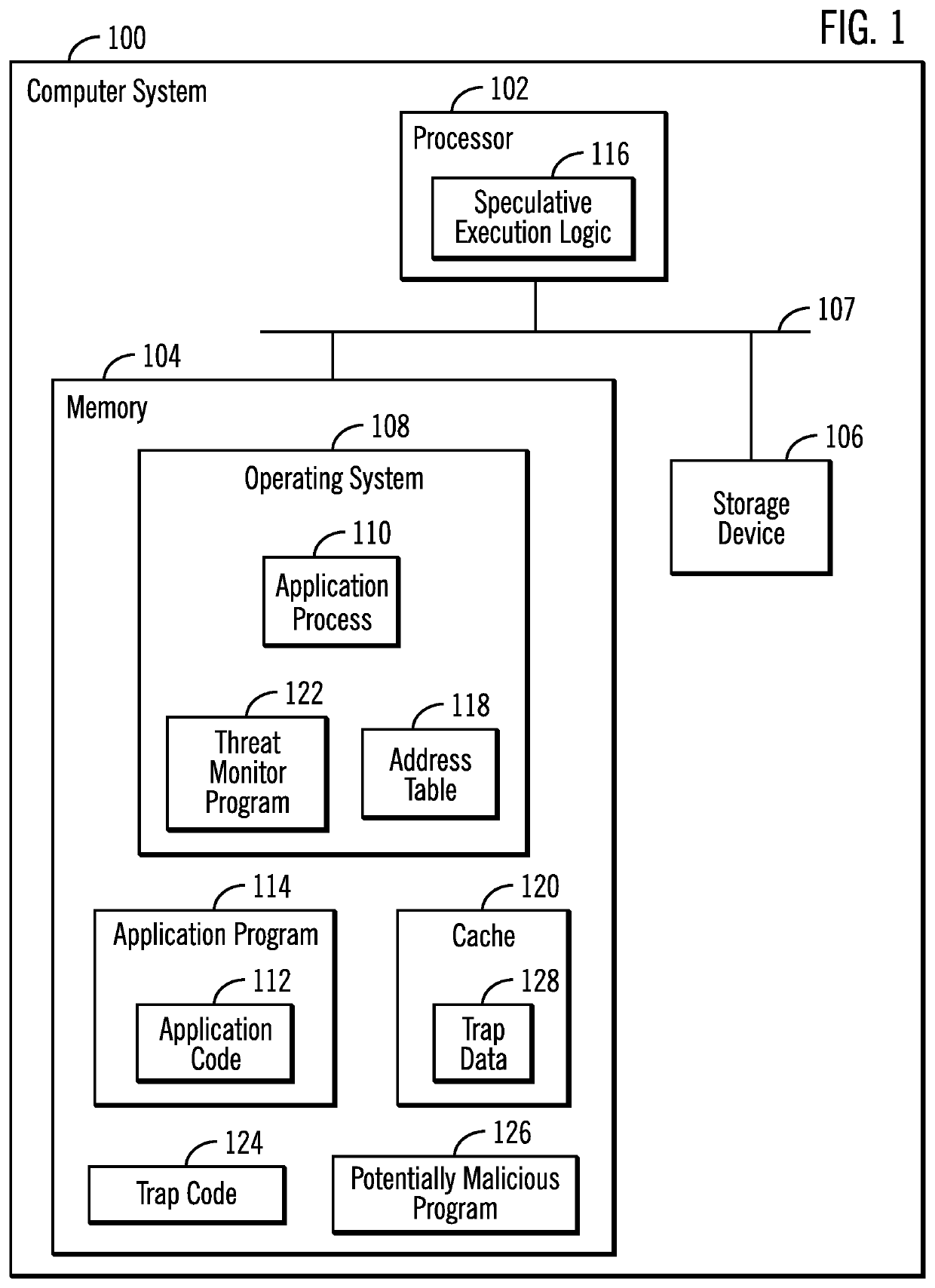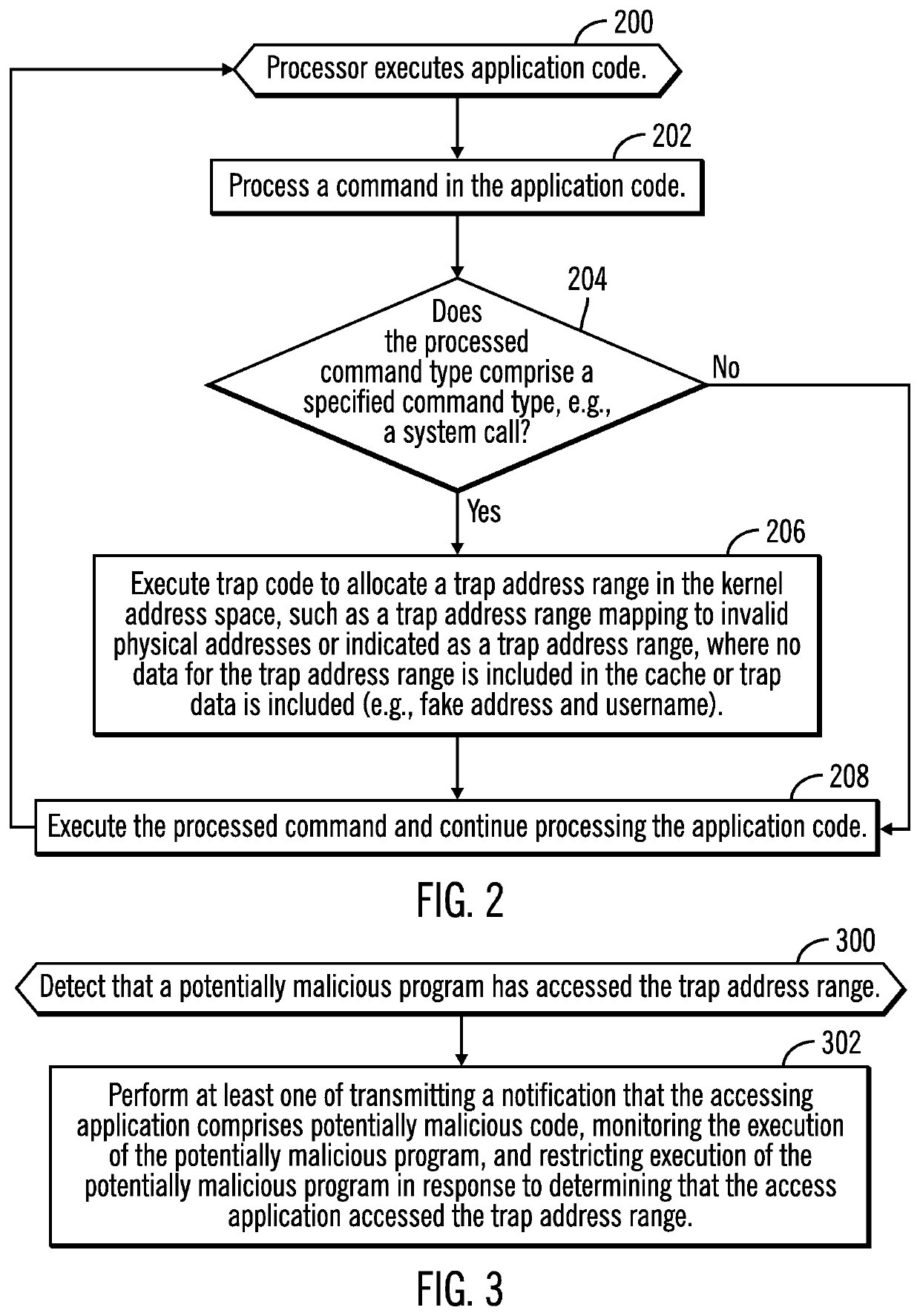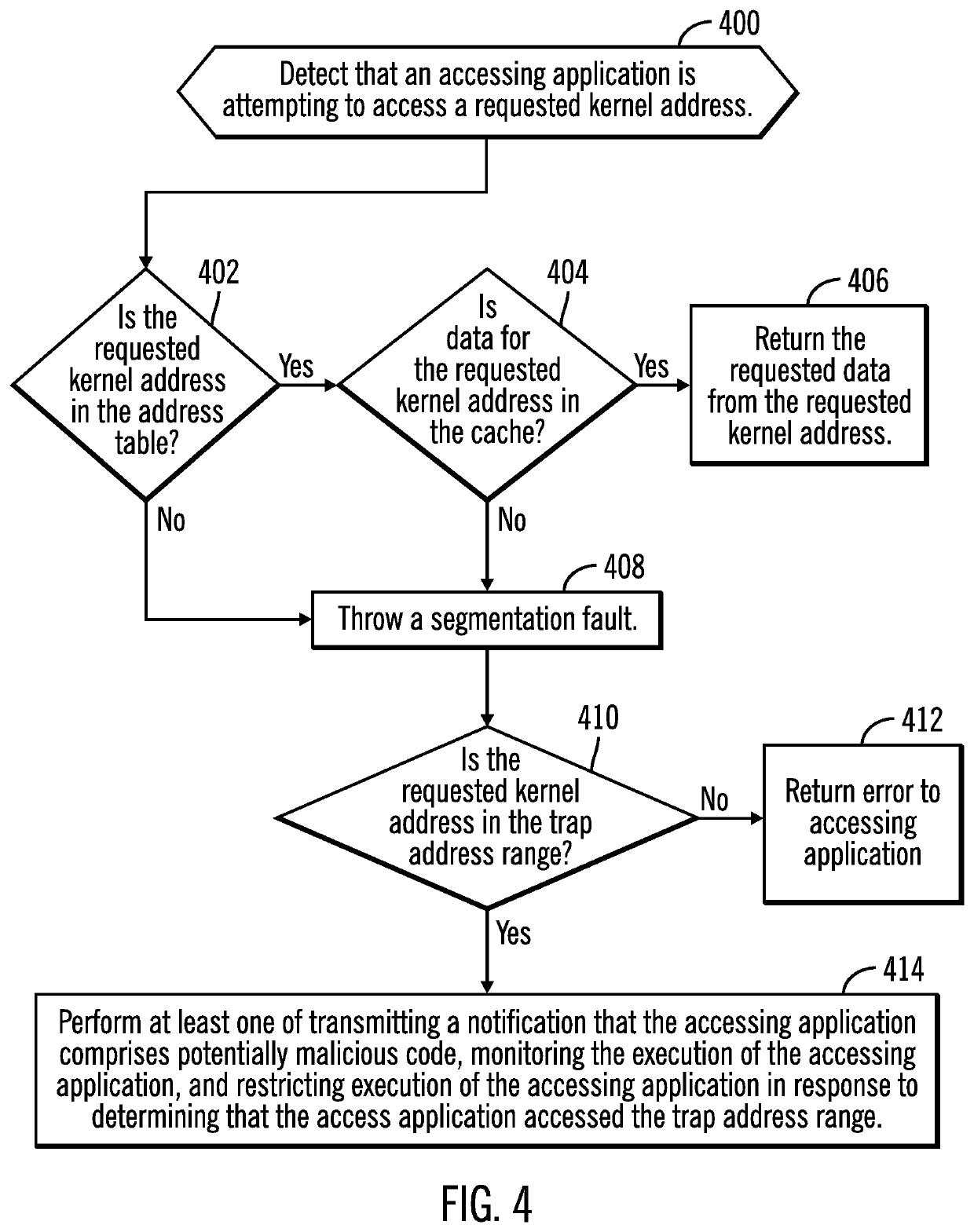Injecting trap code in an execution path of a process executing a program to generate a trap address range to detect potential malicious code
a technology of trap code and execution path, which is applied in the direction of instruments, computing, electric digital data processing, etc., can solve the problems of increasing the likelihood of capturing malicious code, increasing the likelihood of malicious programs looking, and most likely malicious access, so as to increase the efficiency of malicious program monitoring
- Summary
- Abstract
- Description
- Claims
- Application Information
AI Technical Summary
Benefits of technology
Problems solved by technology
Method used
Image
Examples
Embodiment Construction
[0027]In speculative execution, a processor will speculatively execute application code ahead of the application process in the execution path to make parameters and data available to the application process when it eventually reaches the point in the program at which the speculative execution of the application code occurred. If the speculative execution reaches a conditional branch of different paths of execution depending on a condition, such as a value of a previously determined parameter, then the processor speculative execution will process the application code in all the conditional branches to pre-calculate parameters and values to be available regardless of which path of the conditional branches the application process will traverse. This substantially increases the speed of the application process by being able to use the speculatively generated parameters and information without having to execute the application code.
[0028]In the current art, when a process speculatively ...
PUM
 Login to View More
Login to View More Abstract
Description
Claims
Application Information
 Login to View More
Login to View More - R&D
- Intellectual Property
- Life Sciences
- Materials
- Tech Scout
- Unparalleled Data Quality
- Higher Quality Content
- 60% Fewer Hallucinations
Browse by: Latest US Patents, China's latest patents, Technical Efficacy Thesaurus, Application Domain, Technology Topic, Popular Technical Reports.
© 2025 PatSnap. All rights reserved.Legal|Privacy policy|Modern Slavery Act Transparency Statement|Sitemap|About US| Contact US: help@patsnap.com



